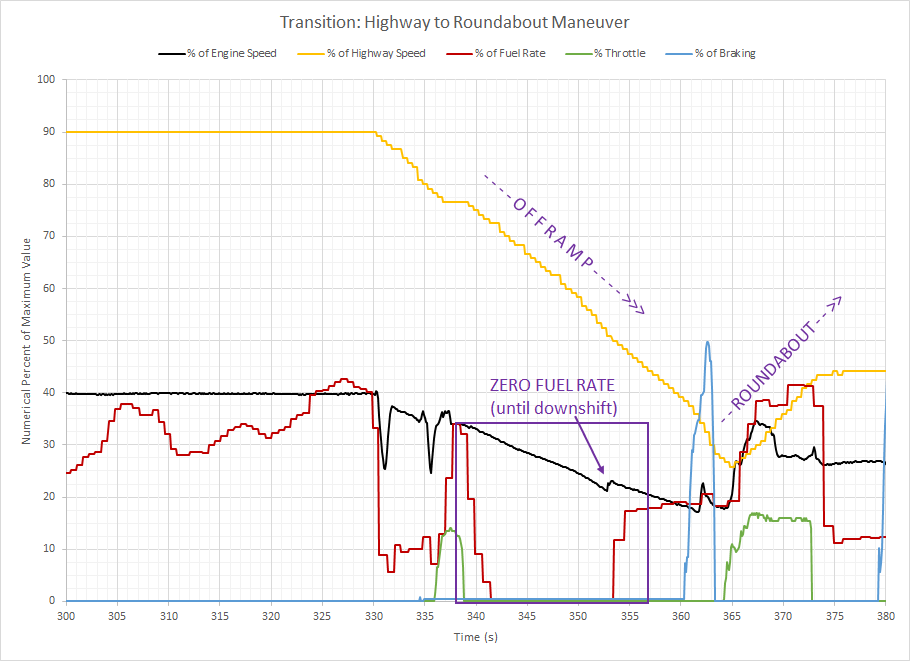Well - sort of. It's not free: I already paid for it in conversion, I'm just donating it to the atmosphere as heat in braking (if not recovered). But I was able to identify the specific condition in which fuel consumption is minimized (reportedly to zero) and yet I was enjoying the nice benefit of full Air Conditioning when it was 95F outside.
How? - As suspected, during the transition from a higher speed (highway) to a lower speed (offramp into a roundabout), there is a short but clear segment of time in which there was no reported fuel consumption use. In practicality, I can assume the fuel injectors are still firing away, but the amount of fuel must be incredibly low....OR Toyota is lying to me over the CANbus.
Take a look at the plot below (analysis, too):

Analytical walk-through:
The area in concern is within the purple box in the plot above. Here we see the vehicle speed decreasing (from highway speed) on the offramp. From 341 to 353s (12 seconds total) there is zero reported fuel consumption. As mentioned previously, I had the Air Conditioner ON and the Blower Fan at maximum (which should suggest the highest temperature differential meaning a higher auxiliary load). While 12 seconds of energy recover doesn't sound like much - for someone who does a significant amount of back-country road driving, this could easily add upto minutes for a daily commute. Another interesting point is that at which the transmission downshifts (assumingly out of over-drive, being a 5-spd automatic). From here forward, fuel is clearly being consumed. I'm curious - If I had shifted from 'D' to '4' and forced the engine into a typical engine-brake scenario, what would the fuel consumption look like? Performing this operation would most certainly increase engine speed, which may increase alternator or A/C loads.
Next task(s):
A. Identify average fuel consumption rates (FCR) throughout an example commute.
B. Correlate the avg. FCR to the stationary testing benchmark to the zero fuel rate time (with A/C on).
Future task: experiment with the shift-out during a coasting operation.
 Michael
Michael
Discussions
Become a Hackaday.io Member
Create an account to leave a comment. Already have an account? Log In.